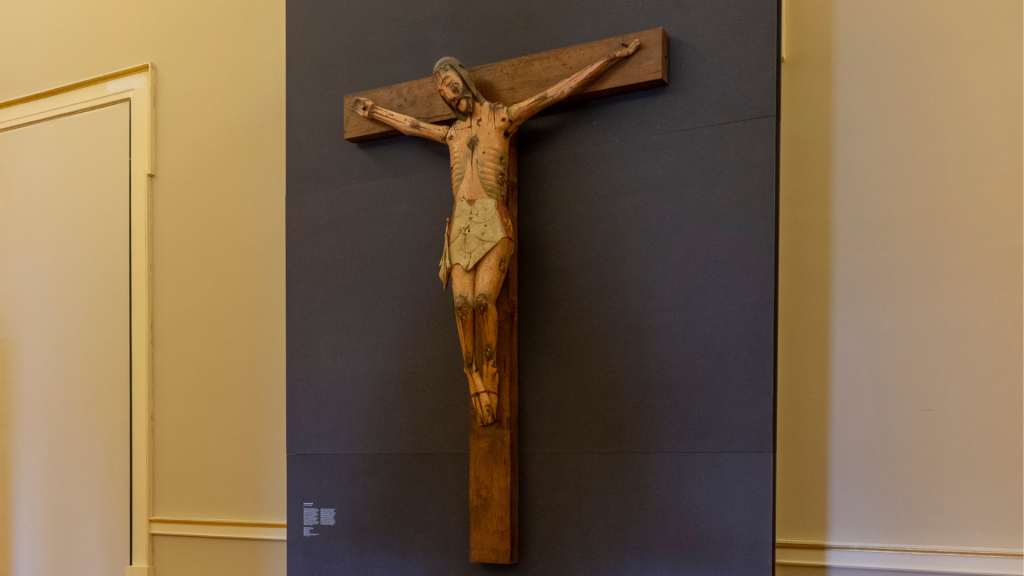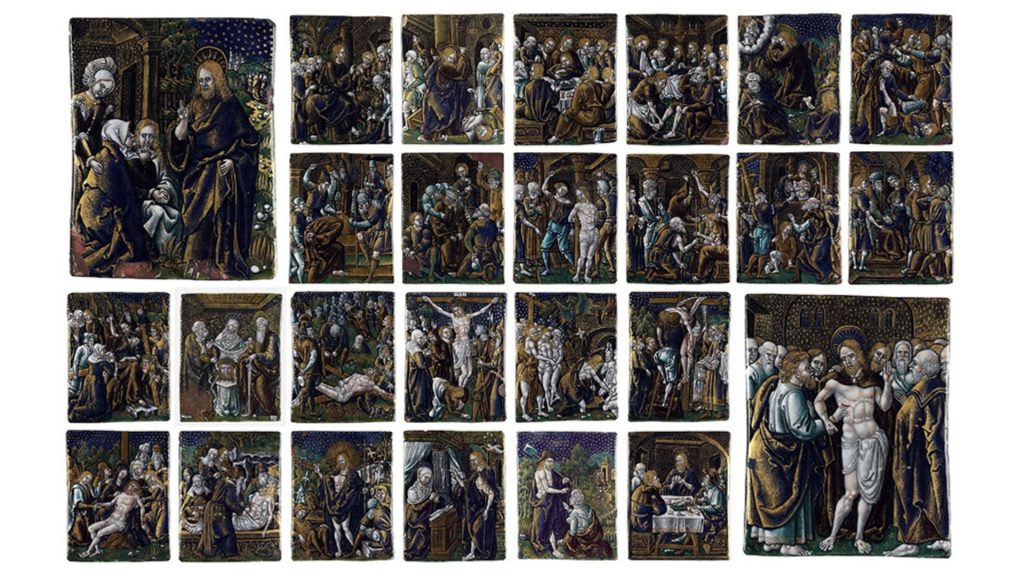Throughout its history, the Soares dos Reis National Museum has brought together collections from different origins, periods and places of production. This diversity has to do with a European tendency to consider Heritage in a multidisciplinary way, linking Painting and Sculpture with the Decorative Arts.
The evolution of religious sculpture in Europe, since the mid-Middle Ages, reflects the rapprochement between the believer and the Divine through the humanisation of works of art. Solemn representations of Christ and the Virgin gradually gave way to expressions of greater humanity.
The representation of the crucified Jesus Christ is a recurring theme in the Catholic religion, due to the relevance of this episode and the symbolism of the cross, manifesting Christ’s suffering but also his salvation. He is traditionally depicted with his arms and legs stretched out and nailed, following the shape of the cross itself.
From the Soares dos Reis National Museum’s long-term exhibition, we highlight two reference pieces this Holy Week: The Crucified Christ and the series of enamel plaques depicting scenes from the Passion of Christ.

The crucified Christ is one of a small number of wooden Christs on the cross that existed in Portugal between the 12th and 14th centuries and whose quality points to a peninsular production. The origin of this crucified Christ, attributed to the School of Valladolid or Palencia at the Amatller Institute of Hispanic Art, is unknown.
The image is articulated at the arms, allowing it to be displayed as a lying-in state on Good Friday. The representation of the suffering Christ (Christus patiens) evolved around the middle of the 12th century in response to a spirituality directed towards the humanisation of Christ, culminating in the Crucifixion.

The series of 26 enamel plaques painted on copper depict scenes from the Passion of Christ, reproducing and recreating 24 of the 36 engravings that make up the series called ” Small Passion “, by the German artist Albrecht Dürer, published in 1511. Other enamel plaques depicting scenes from the Small Passion are attributed to the same artist, such as a series from the Wallace Collection, plaques from the Lyon Museum, the Hermitage Museum in St Petersburg and the Museum of Decorative Arts in Paris, among others.
The plaques are not signed or dated, but they are part of a group of pieces attributed to the same workshop in Limoges between 1550 and 1625. In addition to the 26 plaques in the Soares dos Reis National Museum, around 98 plaques are known today (distributed through various European collections), which are thought to have been produced in this workshop, now known by the convention name “Oficina da Pequena Paixão de Santa Cruz de Coimbra” (Workshop of the Small Passion of St Cross of Coimbra).
The series comes from the Sanctuary of the Monastery of Santa Cruz in Coimbra, where it had already been in 1752 and from where it was removed in 1834 following the decree to abolish religious orders. The wooden altar element in which the plaques were inserted is still preserved in the sanctuary of the Monastery of Santa Cruz.
